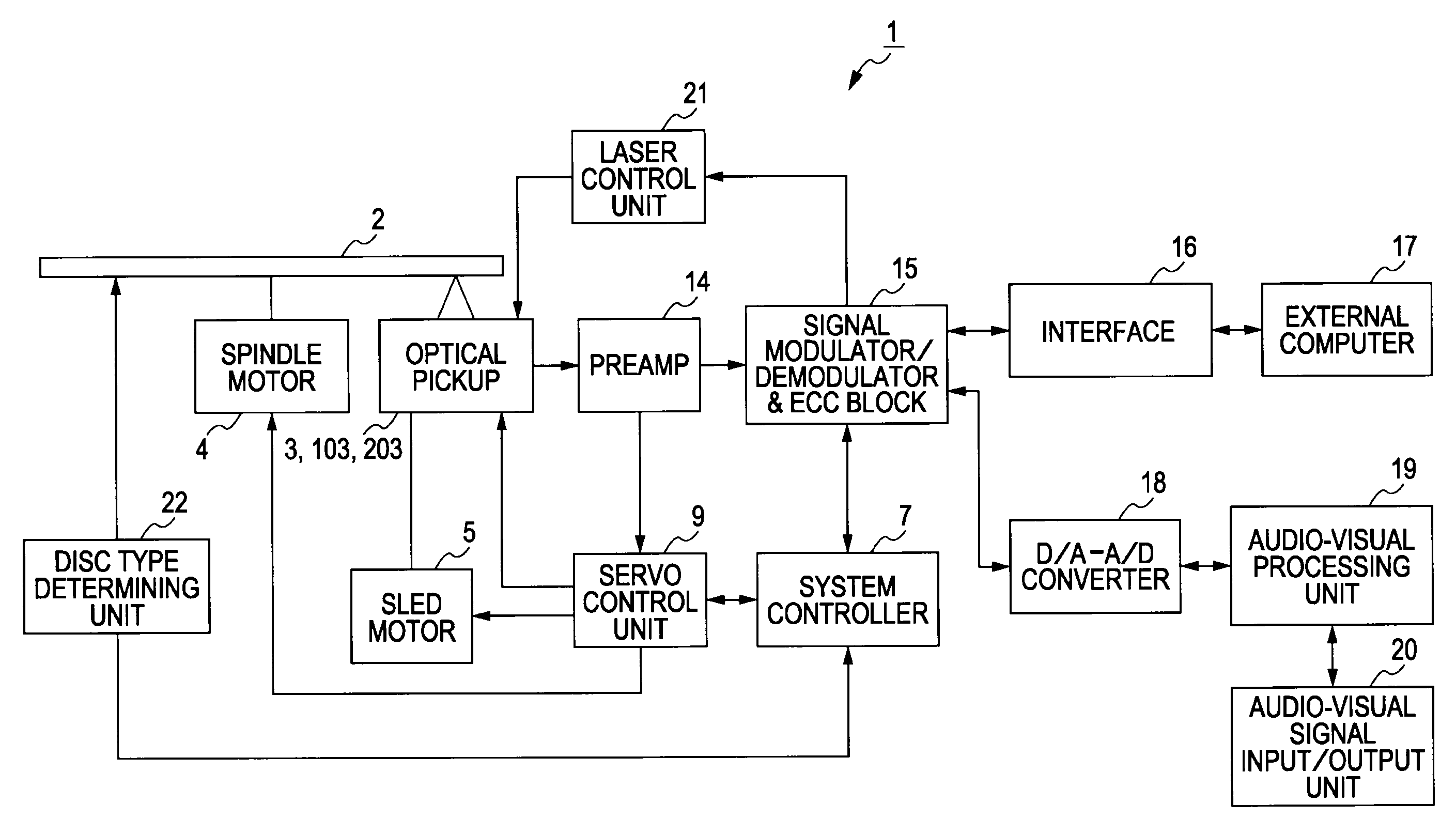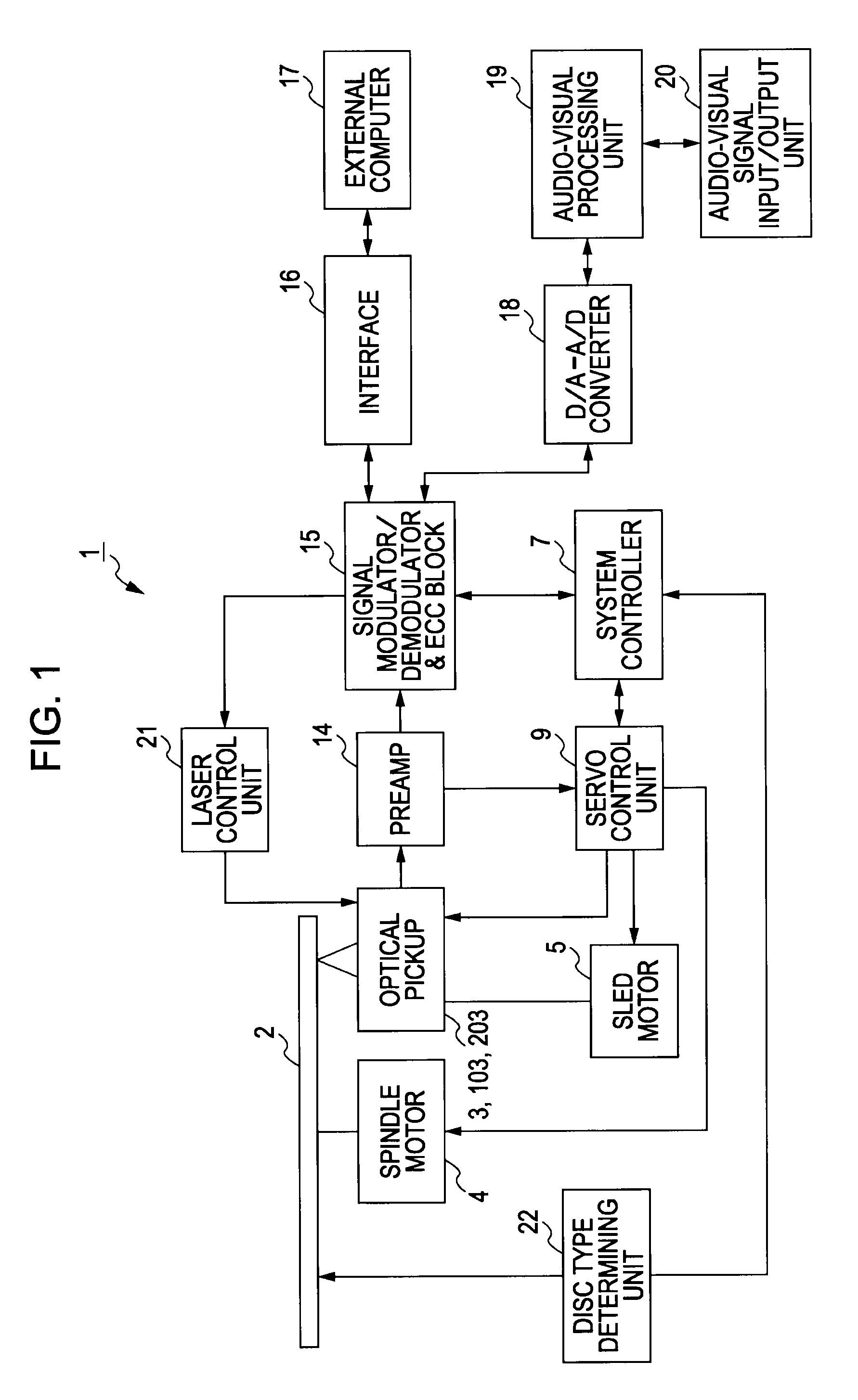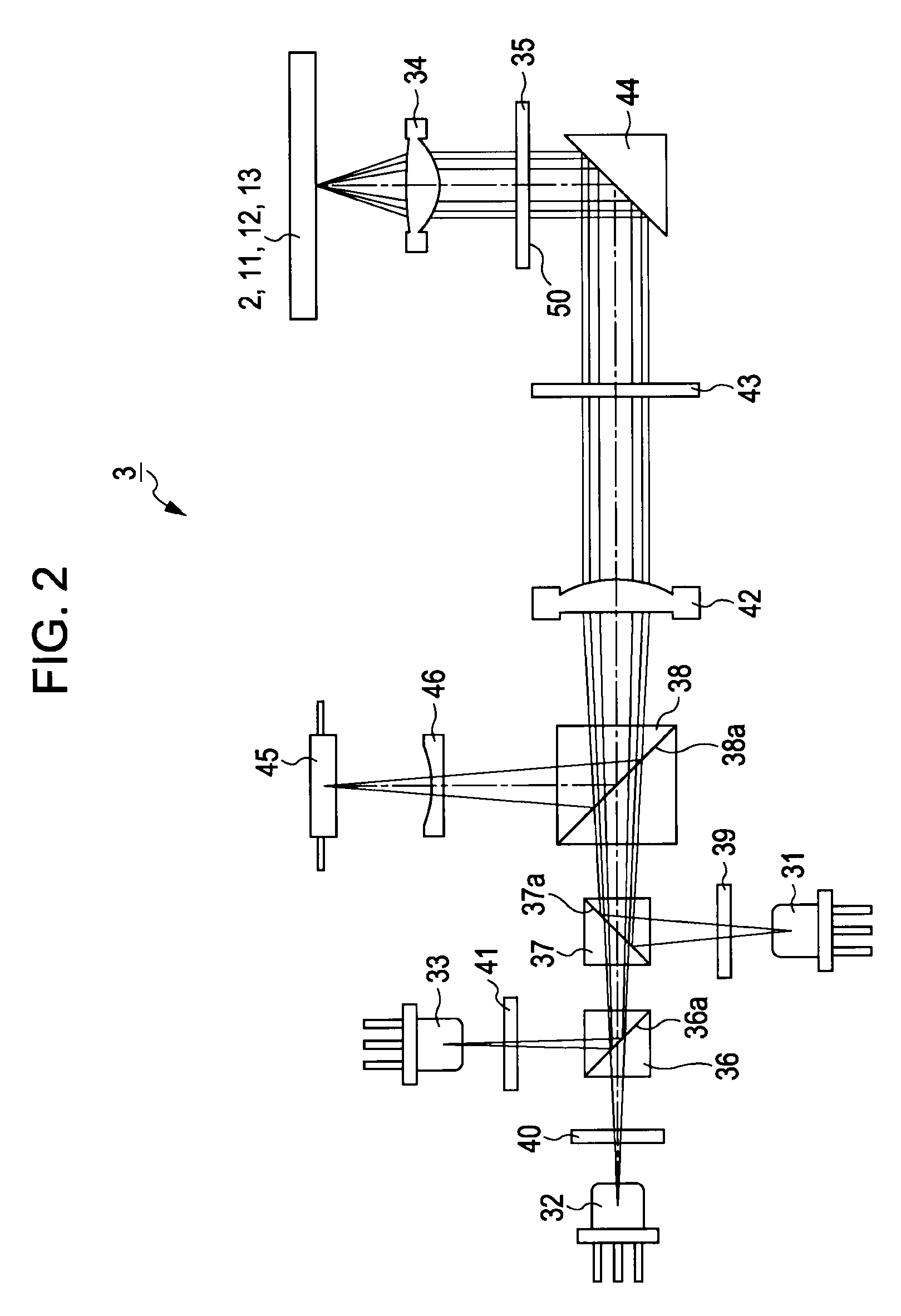Object lens, optical pickup, and optical disc device
a technology of optical discs and objects, applied in the field of objects lenses, optical pickups, optical disc devices, can solve the problems of optical pickups, deterioration in the quality of played signals, and increased cost and size of optical pickups, and achieve excellent recording and/or playing signals, without complicated structure
- Summary
- Abstract
- Description
- Claims
- Application Information
AI Technical Summary
Benefits of technology
Problems solved by technology
Method used
Image
Examples
first embodiment
First Embodiment of Optical Pickup (FIGS. 2 through 19)
[0102]First, an optical pickup 3 to which the present invention is applied will be described as a first embodiment of the optical pickup according to the present invention, with reference to FIGS. 2 through 19. As described above, the optical pickup 3 is an optical pickup which selectively irradiates multiple optical beams with different wavelengths onto three types of optical discs arbitrarily selected from first through third optical discs 11, 12, and 13, of which the format such as the thickness of the protective layer differs, thereby performing recording and / or playing of information signals.
[0103]As shown in FIG. 2, the optical pickup 3 to which the present invention has been applied includes a first light source 31 having a first emitting unit for emitting an optical beam of a first wavelength, a second light source 32 having a second emitting unit for emitting an optical beam of a second wavelength longer than the first...
second embodiment
Second Embodiment of Optical Pickup (FIGS. 20 Through 36)
[0210]Next, an optical pickup 103 to which the present invention is applied will be described as a second embodiment of the optical pickup used in the above-described optical disc device 1, with reference to FIGS. 20 through 36. As described above, the optical pickup 103 is an optical pickup which selectively irradiates multiple optical beams with different wavelengths onto optical discs arbitrarily selected from first through third optical discs 11, 12, and 13, of which the format such as the thickness of the protective layer differs, thereby performing recording and / or playing of information signals.
[0211]As shown in FIG. 20, the optical pickup to which the present invention has been applied includes a first light source 131 having a first emitting unit for emitting an optical beam of a first wavelength, a second light source 132 having a second emitting unit for emitting an optical beam of a second wavelength longer than th...
third embodiment
Third Embodiment of Optical Pickup (FIGS. 37 through 59)
[0355]Next, an optical pickup 203 to which the present invention is applied will be described in detail as a third embodiment of the optical pickup used in the above-described optical disc device 1, with reference to FIGS. 37 through 59. As described above, the optical pickup 203 is an optical pickup which selectively irradiates multiple optical beams onto optical discs selected from first through third optical discs 11, 12, and 13, of which the format such as the thickness of the protective layer differs, thereby performing recording and / or playing of information signals.
[0356]Note that the optical pickup 203 serving as the third embodiment described here is for solving the same problems as those of the above-mentioned optical pickups 3 and 103, and additionally, solving the following problems, and includes an arrangement for obtaining more advantageous effects. Firstly, with the optical pickup 203, demands for realizing enhan...
PUM
 Login to View More
Login to View More Abstract
Description
Claims
Application Information
 Login to View More
Login to View More - Generate Ideas
- Intellectual Property
- Life Sciences
- Materials
- Tech Scout
- Unparalleled Data Quality
- Higher Quality Content
- 60% Fewer Hallucinations
Browse by: Latest US Patents, China's latest patents, Technical Efficacy Thesaurus, Application Domain, Technology Topic, Popular Technical Reports.
© 2025 PatSnap. All rights reserved.Legal|Privacy policy|Modern Slavery Act Transparency Statement|Sitemap|About US| Contact US: help@patsnap.com



